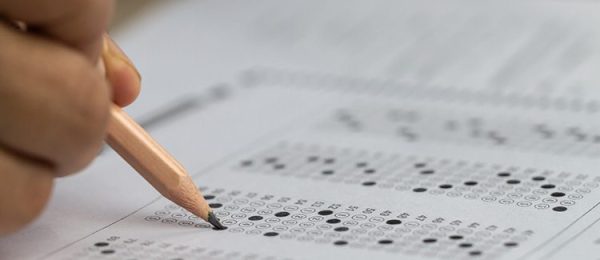How the Education System Has Failed Students
For decades, education has been instituted to ensure that the future of this country and this planet is in safe, competent, and primed hands. The word “educate” means “to give intellectual, moral, and social instruction to someone, especially a child.” Education has evolved tremendously since Confucius, the Greeks, and the Middle Ages, but has it evolved successfully? Has it changed for the betterment of the young and uneducated? Has it enabled us to express, to learn, and to be prepared for the world awaiting us? The answer isn’t a simple “Yes” or “No”. It is far more complex than that. Such a debate regarding the failures of the education system has been a national discussion for years. Most recently, it has been on the minds of educators and students everywhere, particularly when a year of learning was lost to the global pandemic. The pandemic has helped highlight what we already all know: Learning to obtain knowledge is no longer the main pursuit of students.
The modern mindset, known as consumer mentality, has reached as far as the education system. Education is now placed as a product for sale and consumption with students and their caregivers as its consumers. The main focus of education is centered around acquiring a degree, and the average American family pays around $35,720 per student per year for schooling. In the last 20 years, this cost has tripled. Transforming education into a commodity with a numerical value system, like a car or a house for example, alters the mindset of students. By putting education in the same box as goods to be bought, students lose sight of the real value of education and how the process of learning has an intrinsic value of its own.
Universities have certain criteria students must fill, and both exam scores and grades must reflect that. To get into Harvard University, for example, one of the most prestigious schools in the United States, one must have a 1580 SAT or a 35 ACT as well as a 4.18 GPA or higher. To provide context to these numbers, the SAT is out of 1600 points, the ACT is out of 36 points, and a student’s GPA ranges from 0.0 – 4.0. Such grades now define what a “good student” is. However, grades and scores hardly ever express one’s intellect entirely and sometimes under those A’s, integrity and even merit can be questionable. Educators often regard cheating as a result of laziness and a lack of integrity, but they are missing the full picture.
Young people are conditioned to pursue grades over the process of learning. Many feel it is more essential than attaining knowledge itself. Because of this perceivable flaw, our education system psychologically compels students to use any means necessary to achieve that A, even means such as cheating. Although, when students cheat, it does not come unwarranted. The University of Northern Colorado states that to acquire an A in the American grading system, students must memorize and be able to reciprocate at least 92% of the material covered in classrooms. Comparing that to both the United Kingdom and Canada at 70% and 80% respectively. Cheating may be wrong, but it is never without reason. Neil deGrasse Tyson, planetary scientist, author, and science communicator, states, “When students cheat on exams, it’s because our school system values grades more than students value learning.” In essence, it can be understood that there is a greater motivation for cheating. The motivation to learn is clouded by the notion that better grades lead to a better future. But what kind of future awaits you when you barely remember what you have learned because you have cheated? The American Psychological Association (APA) states that “Nearly three-quarters of college students surveyed admitted to cheating on tests or plagiarizing papers at least once during high school.” Cheating is merely a symptom of the disease plaguing the American educational system. Part of the treatment for this is to evolve technologically, psychologically, and even culturally. Students drift through classes, day after day, week after week, learning information only to throw it all away on an exam, never understanding the material or ingesting it. It is a means to an end. We need to evolve, we must throw away this outdated model of teaching, studying, testing, and look to really connect with students. We need to find better ways to support individual needs, as well as help define goals. Collaborative projects and mixed media presentations are just a few modern forms of shared learning that we can replace modern testing with. The future is happening now, and how we prepare for it will make the greatest difference.
Bibliography:
- Lemons, Kaylee. “Students Value Grades over Learning.” The Vernois News, https://vernoisnews.com/1228/opinions/students-value-grades-over-learning/. Accessed 4 Jan. 2022.
- “How Our Education System Fails Most Students.” The Edvocate, 11 Sept. 2019, https://www.theedadvocate.org/how-our-education-system-fails-most-students/.
- Ginez, Ngozi Adichie, Norma. “The Public Schools Are Failing Us Again.” Nydailynews.Com, https://www.nydailynews.com/opinion/ny-oped-the-public-schools-fail-us-again-2021063 0-thon7knhbzadvdnp5uaevubfoi-story.html. Accessed 20 Dec. 2021.
- Semuels, Alana. “Good School, Rich School; Bad School, Poor School.” The Atlantic, 25 Aug. 2016, https://www.theatlantic.com/business/archive/2016/08/property-taxes-and-unequal-schools/497333/.
- “20 Reasons Why the American Education System Is Failing.” The Tech Edvocate, 16 June 2021, https://www.thetechedvocate.org/20-reasons-why-the-american-education-system-is-failing/.
- The Current Education System Is Failing Our Students. https://edsurgeindependent.com/@JaredSilver. Accessed 17 Jan. 2022.






